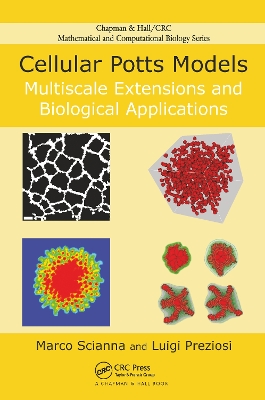Chapman & Hall/CRC Mathematical Biology
1 total work
A flexible, cell-level, and lattice-based technique, the cellular Potts model accurately describes the phenomenological mechanisms involved in many biological processes. Cellular Potts Models: Multiscale Extensions and Biological Applications gives an interdisciplinary, accessible treatment of these models, from the original methodologies to the latest developments.
The book first explains the biophysical bases, main merits, and limitations of the cellular Potts model. It then proposes several innovative extensions, focusing on ways to integrate and interface the basic cellular Potts model at the mesoscopic scale with approaches that accurately model microscopic dynamics. These extensions are designed to create a nested and hybrid environment, where the evolution of a biological system is realistically driven by the constant interplay and flux of information between the different levels of description. Through several biological examples, the authors demonstrate a qualitative and quantitative agreement with the relative experimental data.
The cellular Potts model is increasingly being used for the mathematical modeling of a wide range of biological phenomena, including wound healing, tumor growth, and cancer cell migration. This book shows how the cellular Potts model can be used as a framework for model building and how extended models can achieve even better biological practicality, accuracy, and predictive power.
